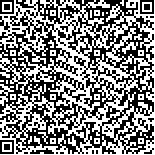| 摘要: |
| 于1994-1995年分二批以人工配合饵料作为有机污染源,进行有机污染对中国对虾体内外环境影响的研究。结果表明:1.经10d,试验池水中DO含量明显降低,而COD,NH3-N,NO2-N等迅速增加,分别是对照池的2.5,2.1,11.3倍;H2S含量经28d后为对照组2.1倍;同时,试验组各菌群的密度也分别比对照组增加2-3个数量级。2.试验组虾的超氧化物歧化酶、酚氧化酶及溶菌酶的活性比对照组显著下降。3.病理切片观察表明,试验池虾的肝胰腺、鳃、中肠等处有明显病变,且肝胰腺中细小样病毒包涵体增多,而对照地情况与本底近似。上述结果表明,养殖水体有机污染引起水质恶化,使虾体内与抗病有关酶的活性下降,促使疾病发生。 |
| 关键词: 中国对虾 有机污染 内环境 免疫水平 |
| DOI: |
| 分类号: |
| 基金项目:国家攀登计划B资助项目,PDB-6-7-2 |
|
| EFFECTS OF ORGANIC POLLUTION ON PENAEUS CHINENSIS BODY’S INTRAENVIRONMENT AND EXTERNALENVIRONMENT |
|
Ding Meili, Lin lin, Li Gngngyou, Zhu Jinzhao
|
|
Institute of Oceanology, Chinese Academy of Sciences, Qingdao 266071
|
| Abstract: |
| P. chinensis from the Institute of Oceanology and from the Prawn Farm of Shangma County, Qingdao, were used in 1994 - 1995 experiments using excessive artificial diets as organic pollutants. Twelve about 5 cm body length or 5 about 12 cm body length P. chinensis were put into the test pond and control pond. Diet amount supplied to the test pond was twice that of the control pond whose bottom was cleaned every day. Other culture conditions of the two ponds were the same. Various physicochemical and microbiological factors were examined regularly. The lysozyme, SOD, PO activities and histopathological changes of the two shrimp groups were compared. The results were as follows.
1. In 10 days, the test pond’ s DO content decreased strikingly; its COD, NH3-N, NO2-N contents increased rapidly and were 2.5, 2.1, 11.3 time that of the control pond, respectively (Tab.1). After 28 days, the test pond H2S content was 2.1 time that of the control pond; the microbiological contents increased greatly and were more than that of the control pond by 2-3 orders of magnitude. (Tab.2)
2. The lysozyme, SOD and PO activities of the test pond decreased in varying degrees compared with those of the control pond. (Tab.3)
3. Light microscope examination showed the test pond shrimp had much more Hepatopancreatic Parvo-like Virus (HPV) occludsion bodies, and serious pathological changes in the hepatopancreas, gill and midguts, while the microphotos of the body parts of the control pond shrimp before and sometime after experiments were almost the same (Plate I).
The following conclusion could be drawn: organic pollution affects aquatic environment. The NH3-N, NO2-N and H2S contents especially increased markedly, changes the shrimp’s intraenvironment, decreases its immune level, and may induce disease. |
| Key words: Penaeus chinensis, Organic pollution, Intraenvironment, Immune level |
